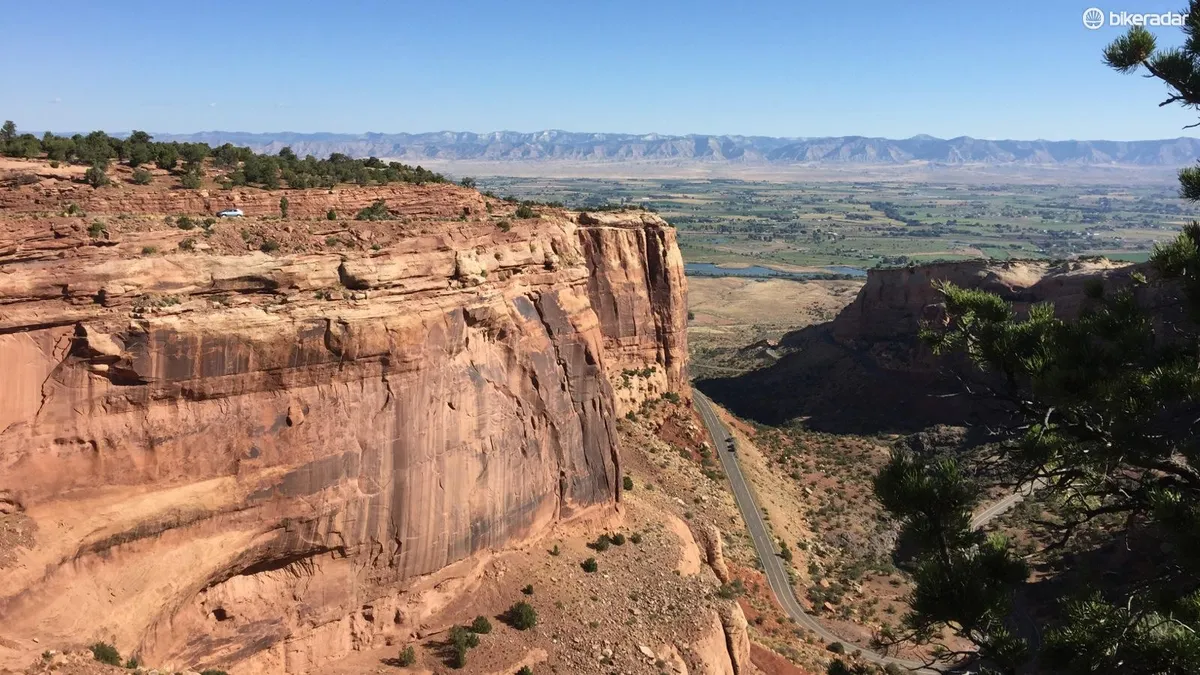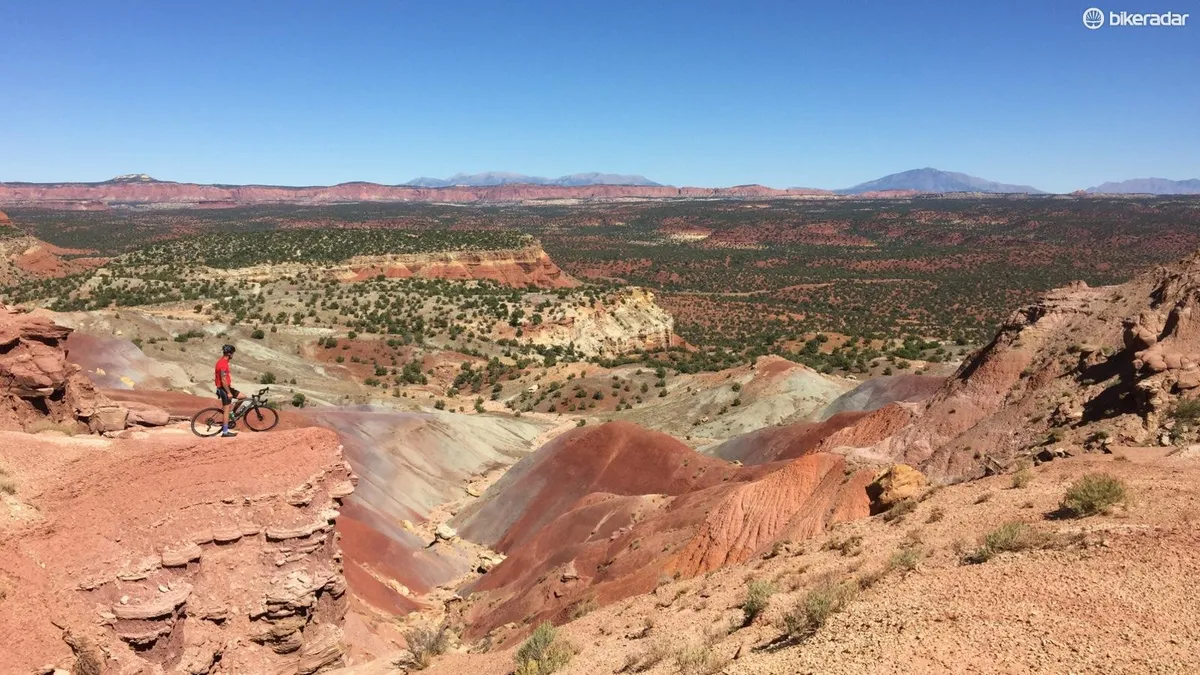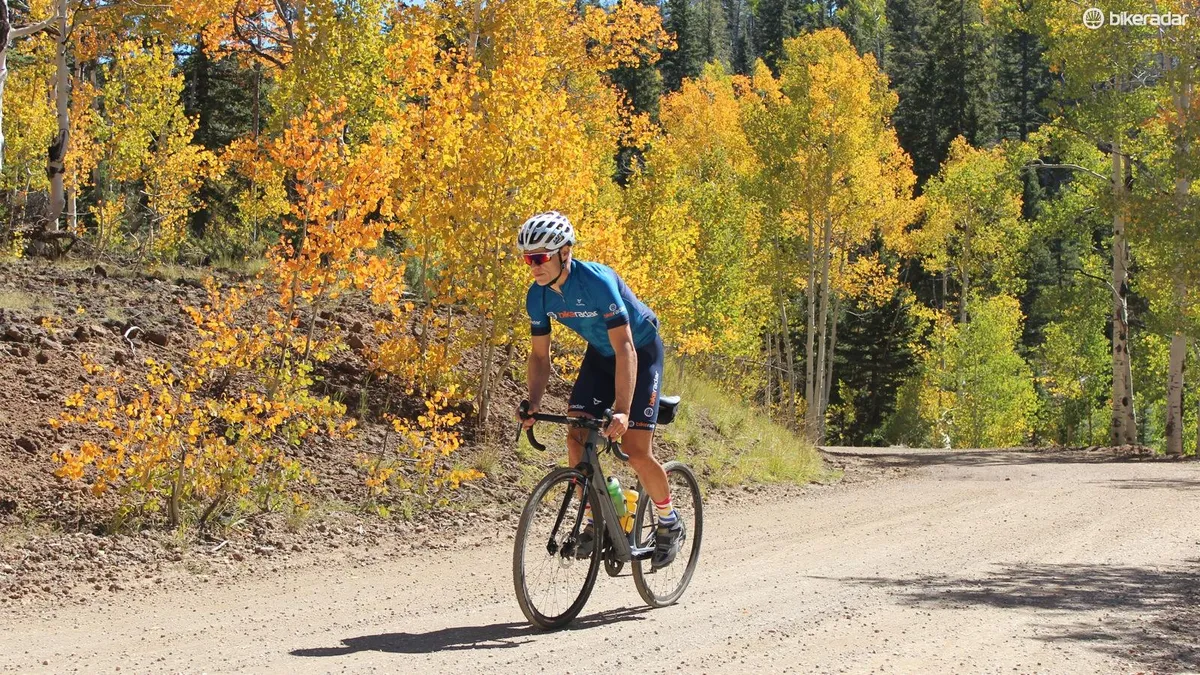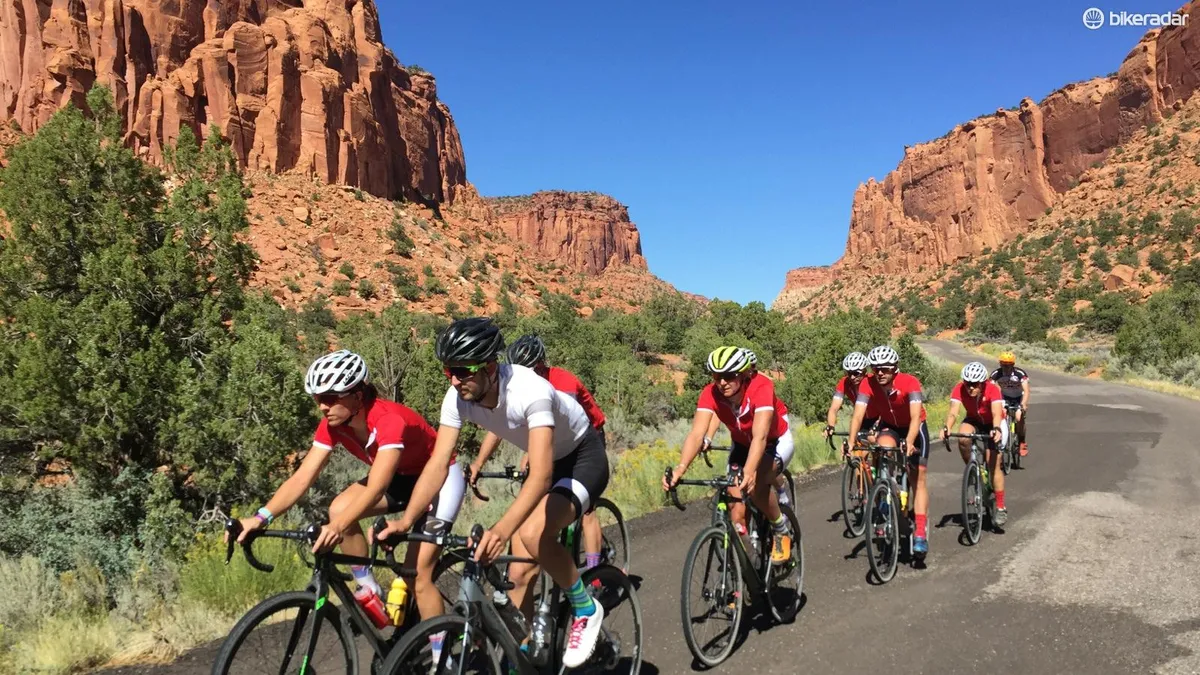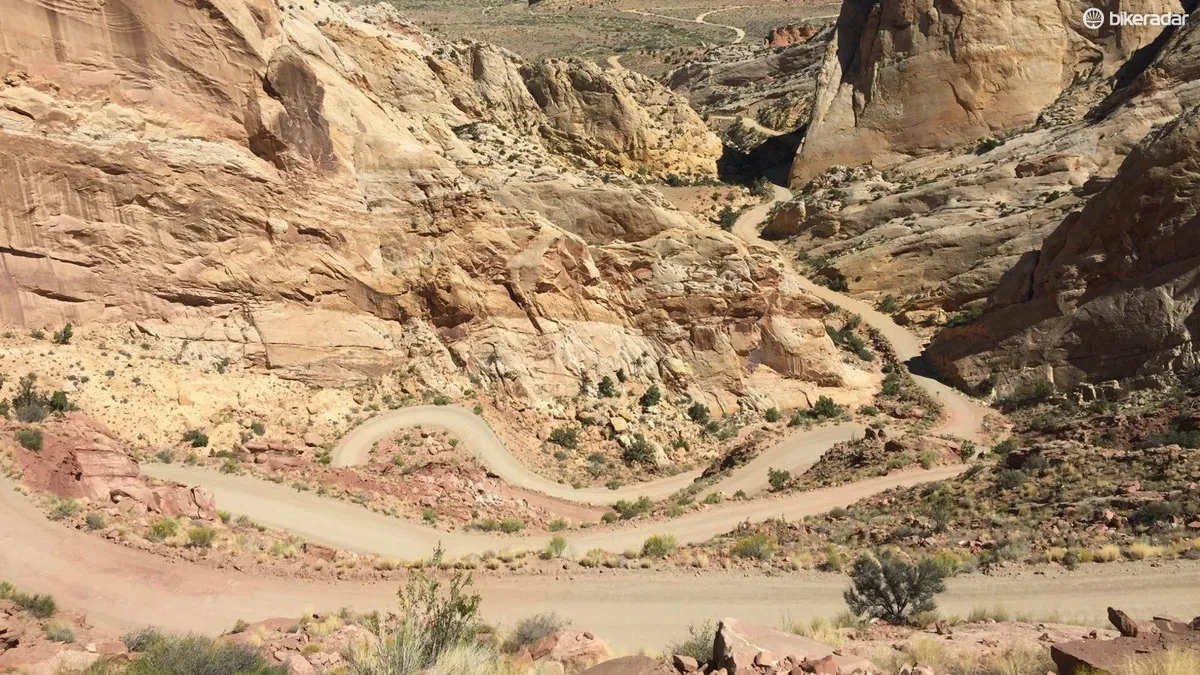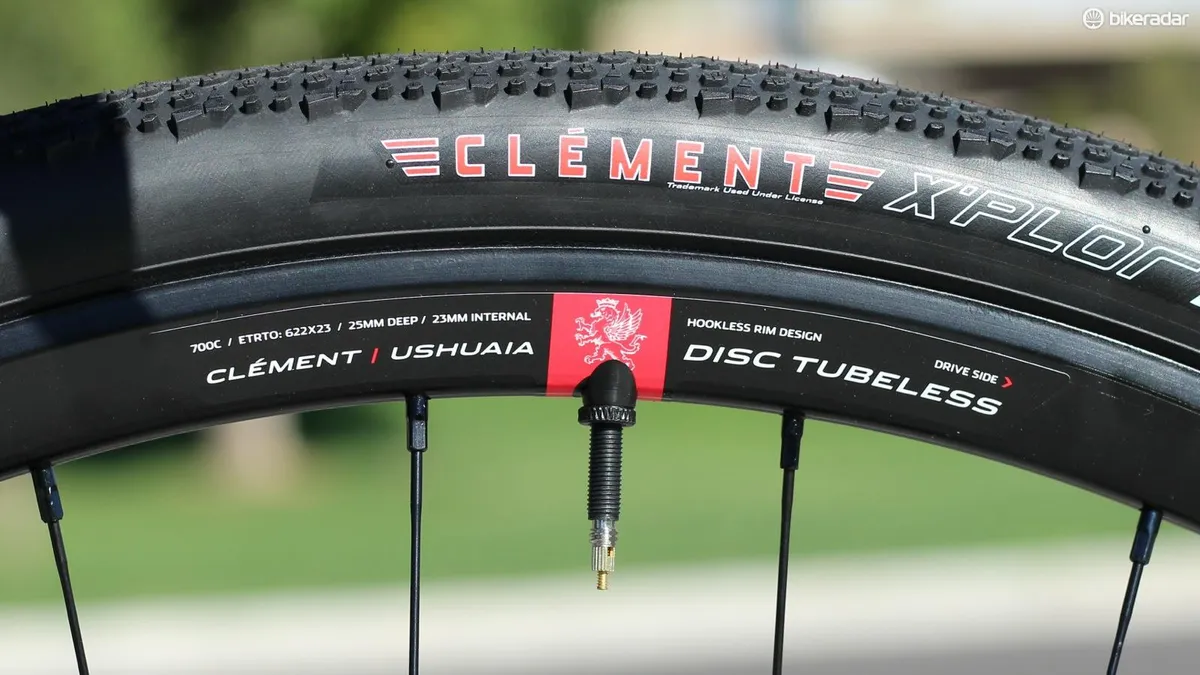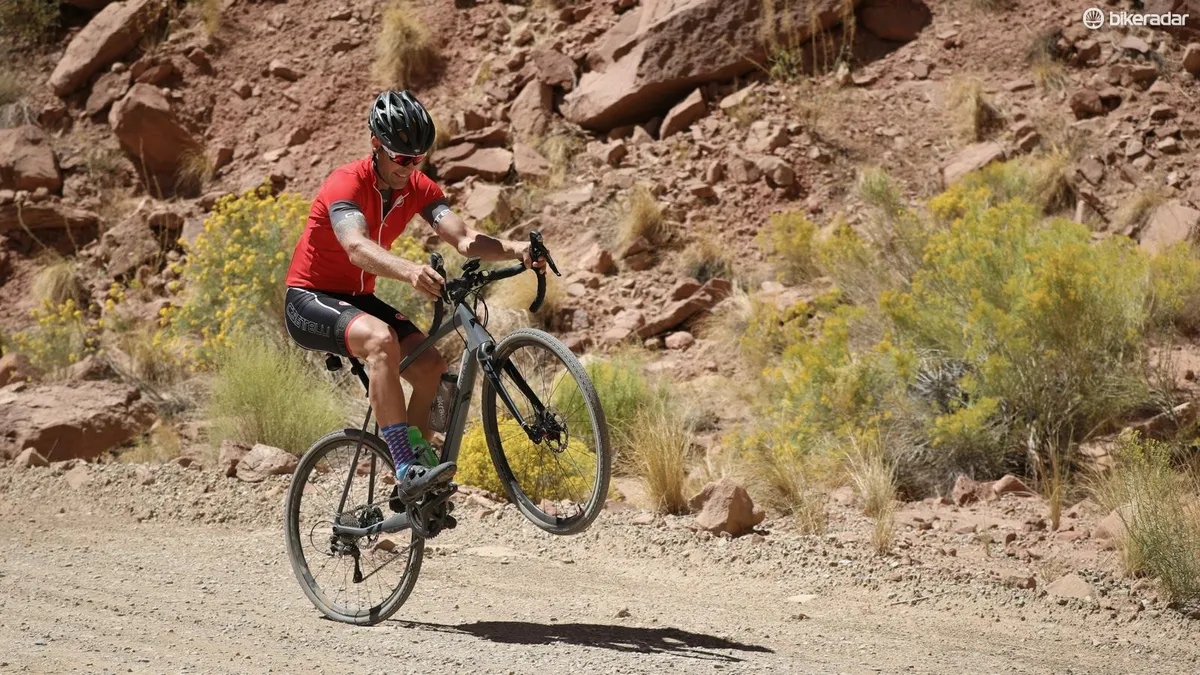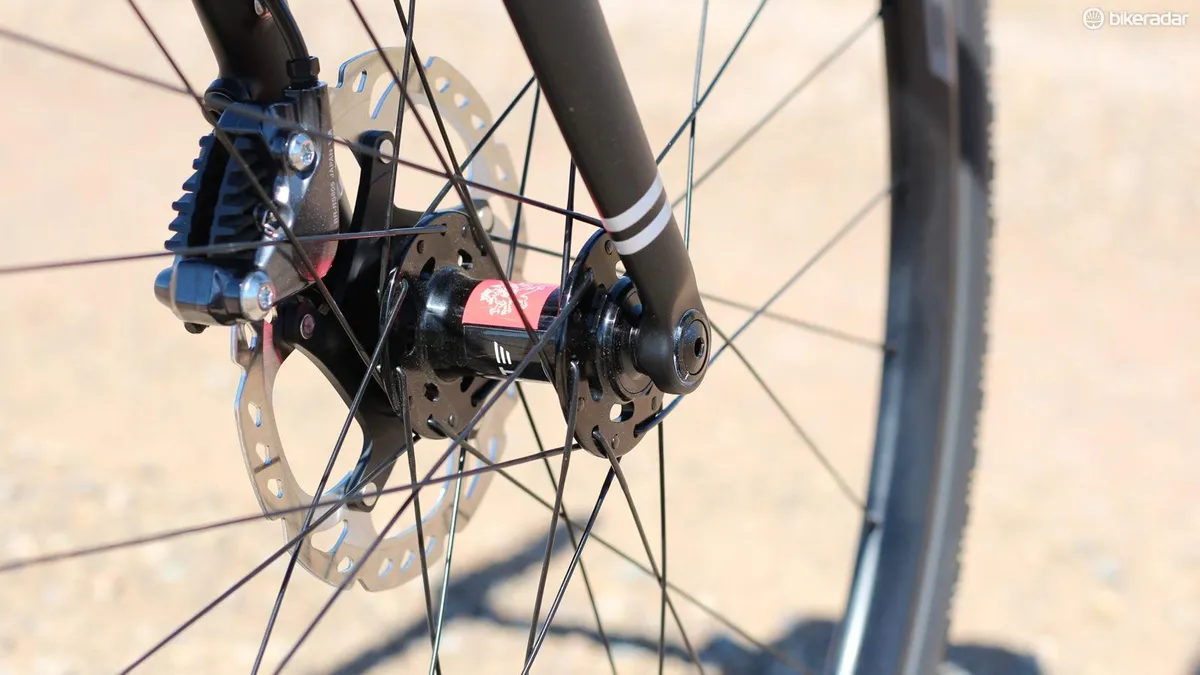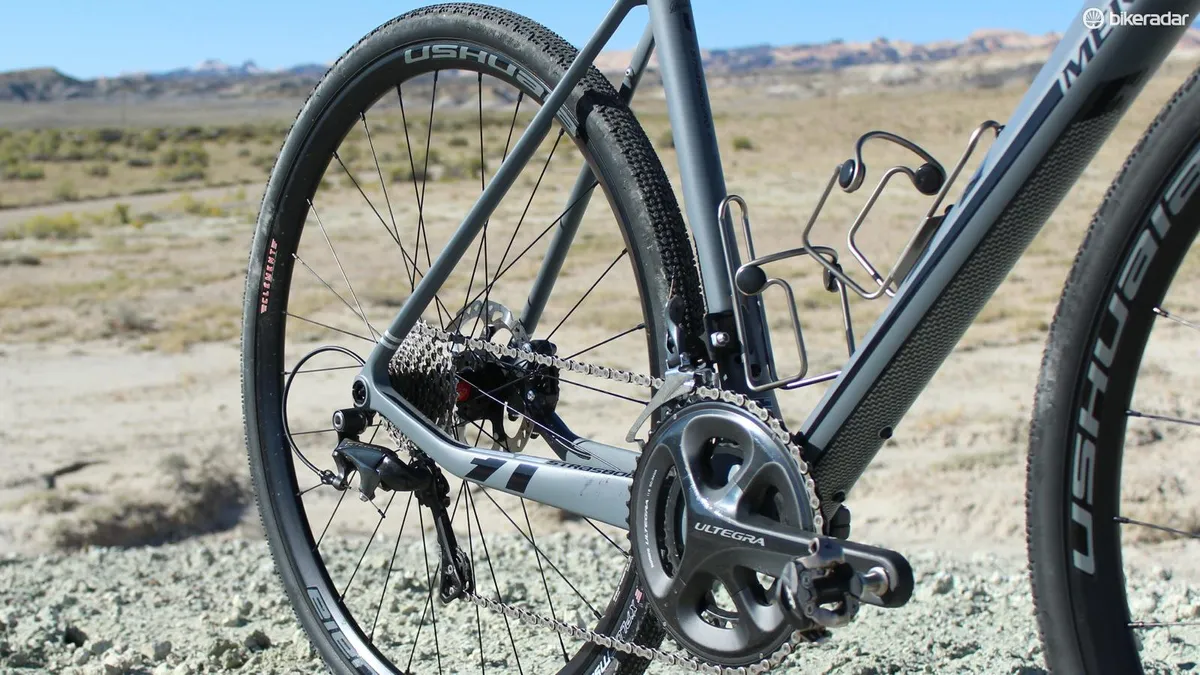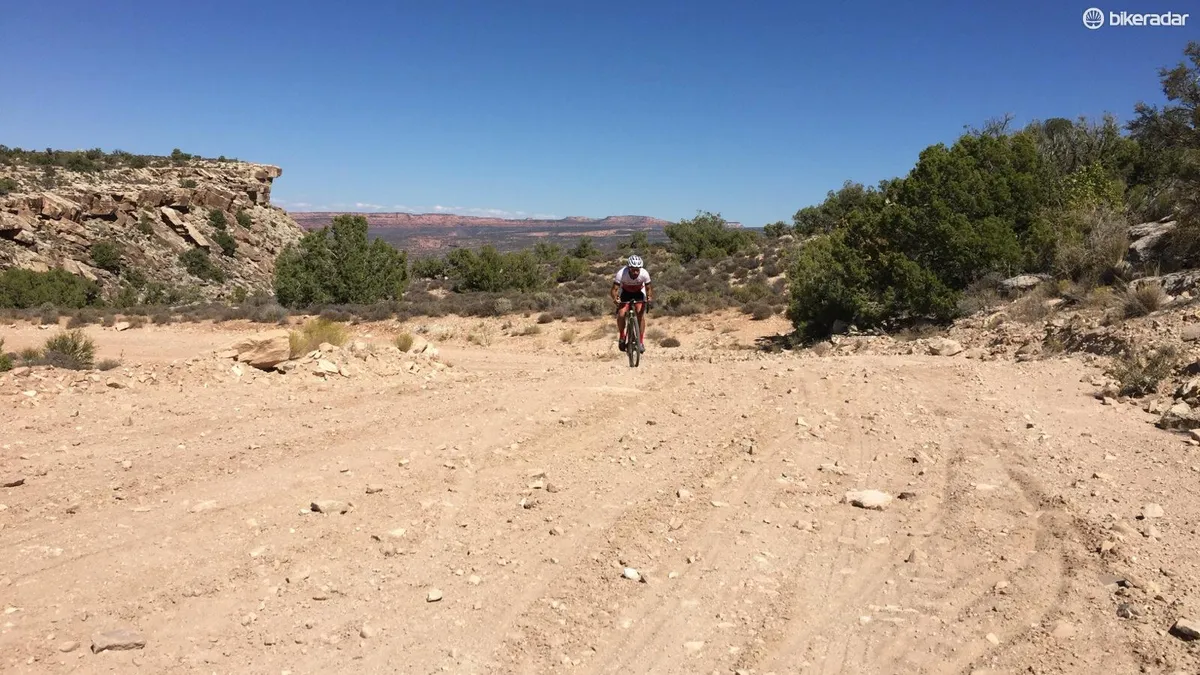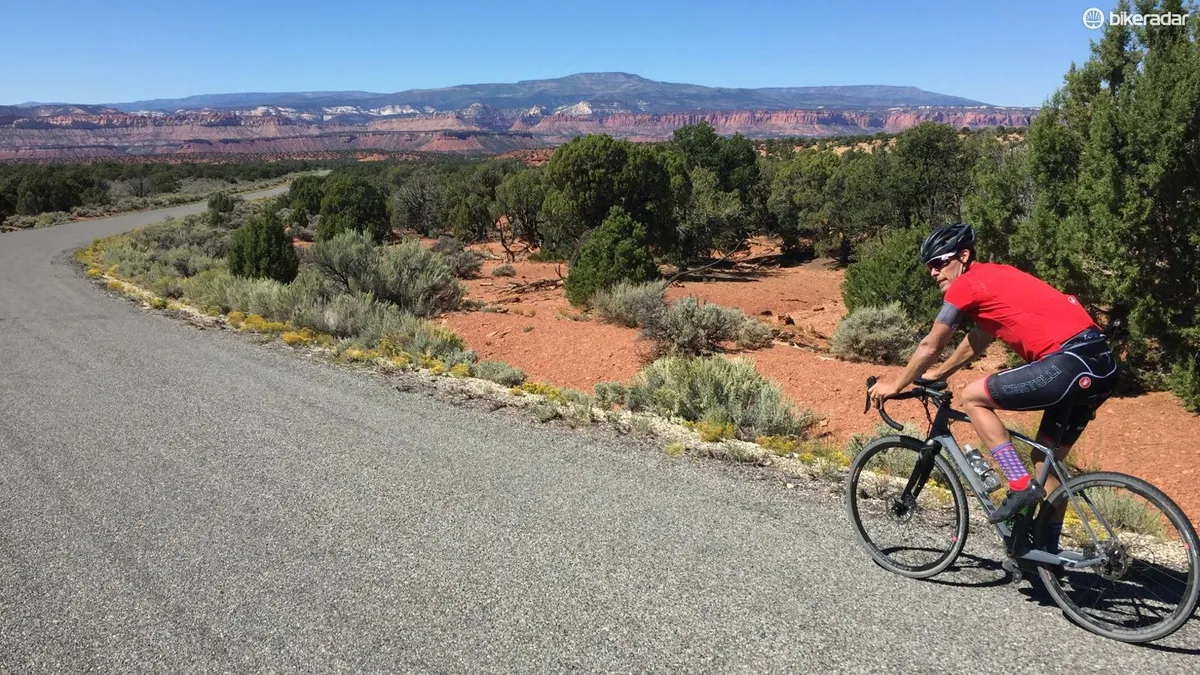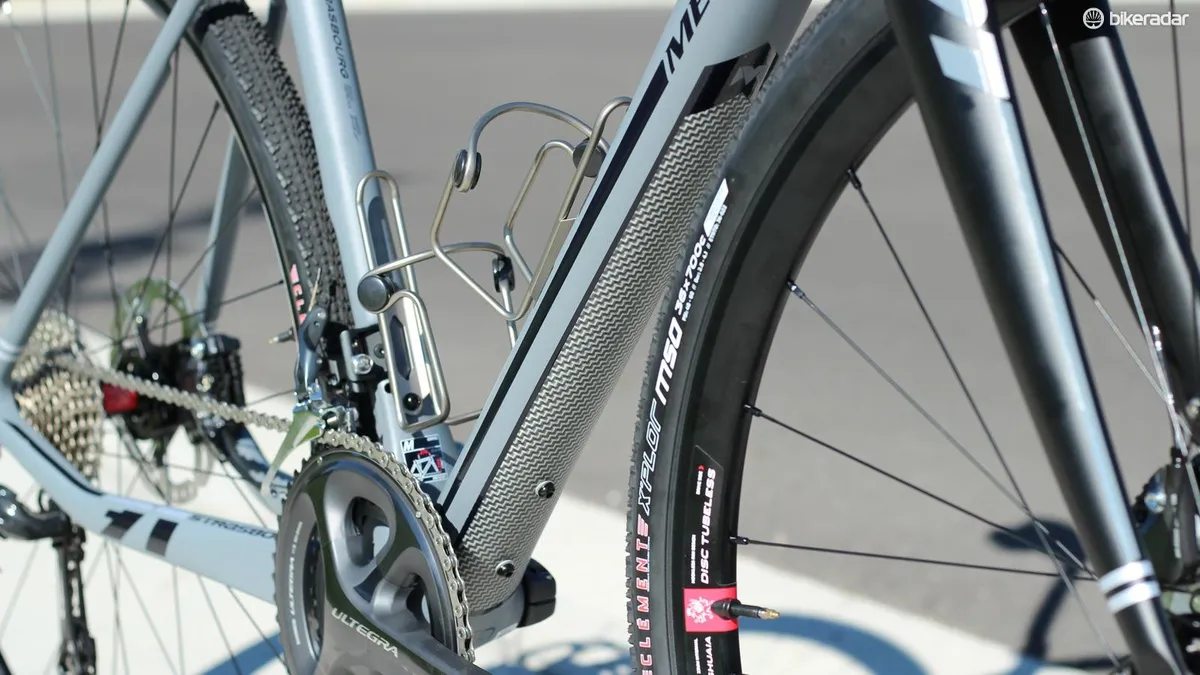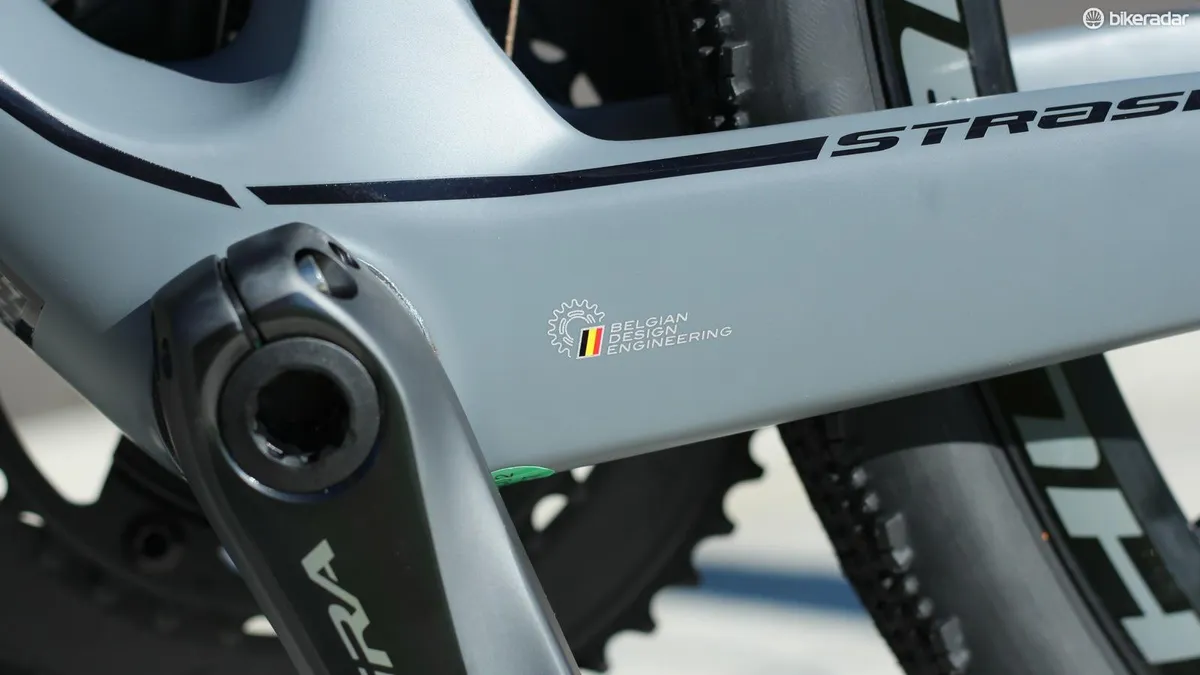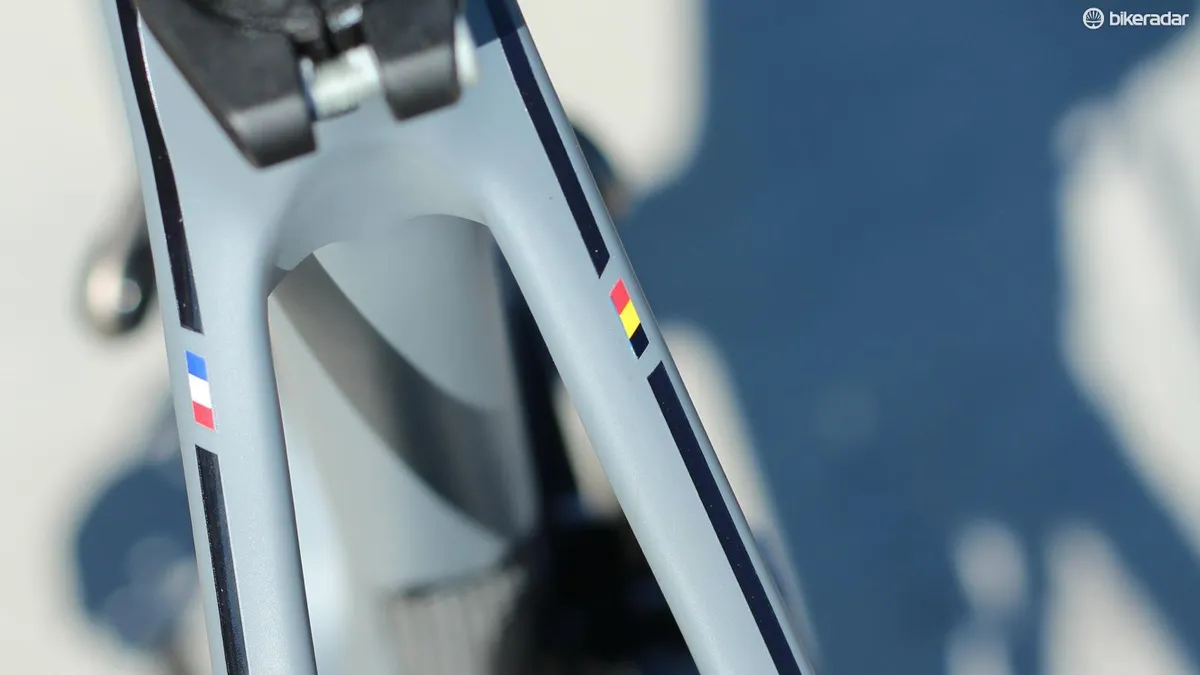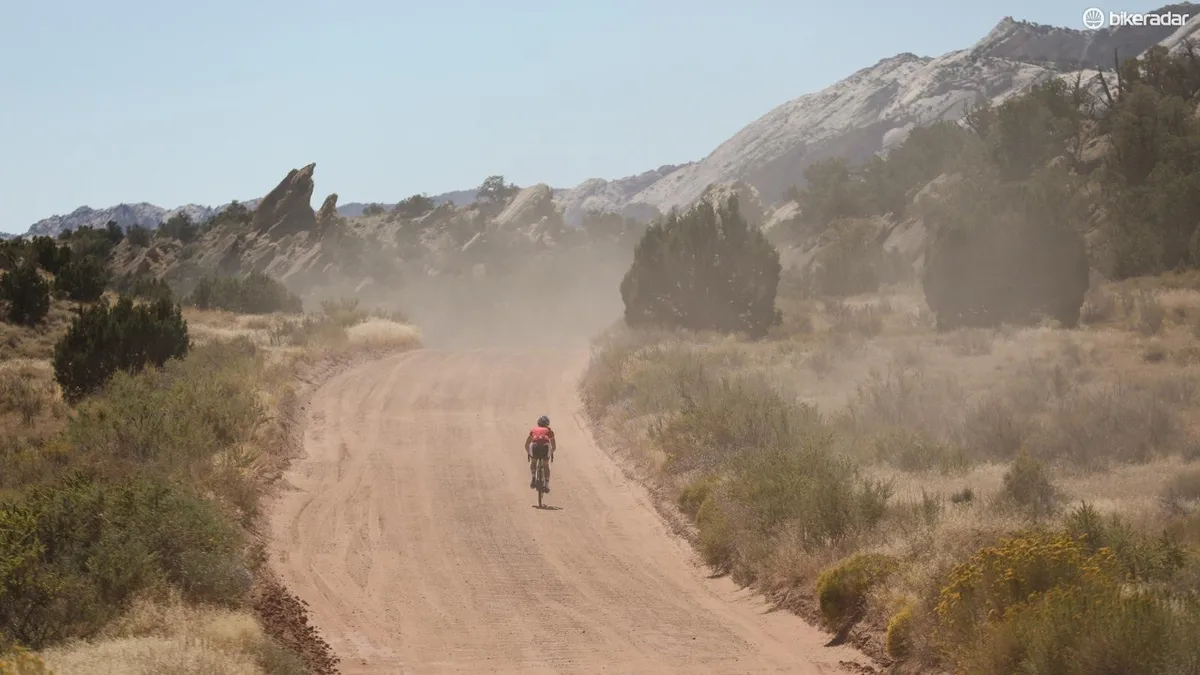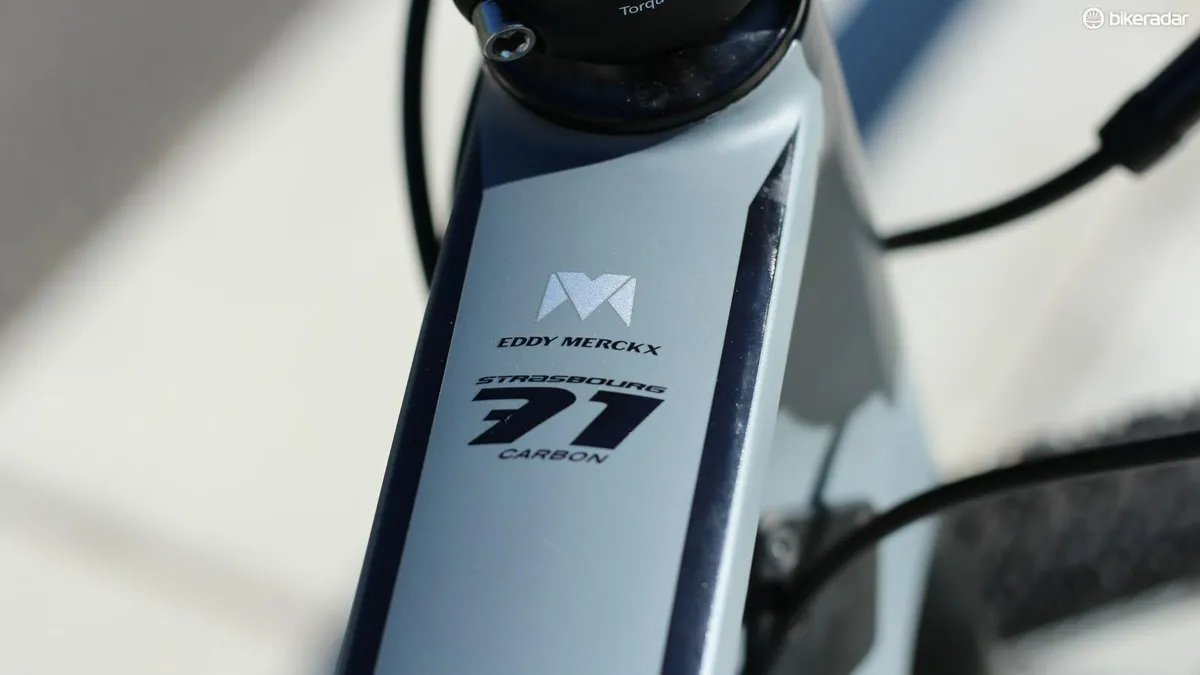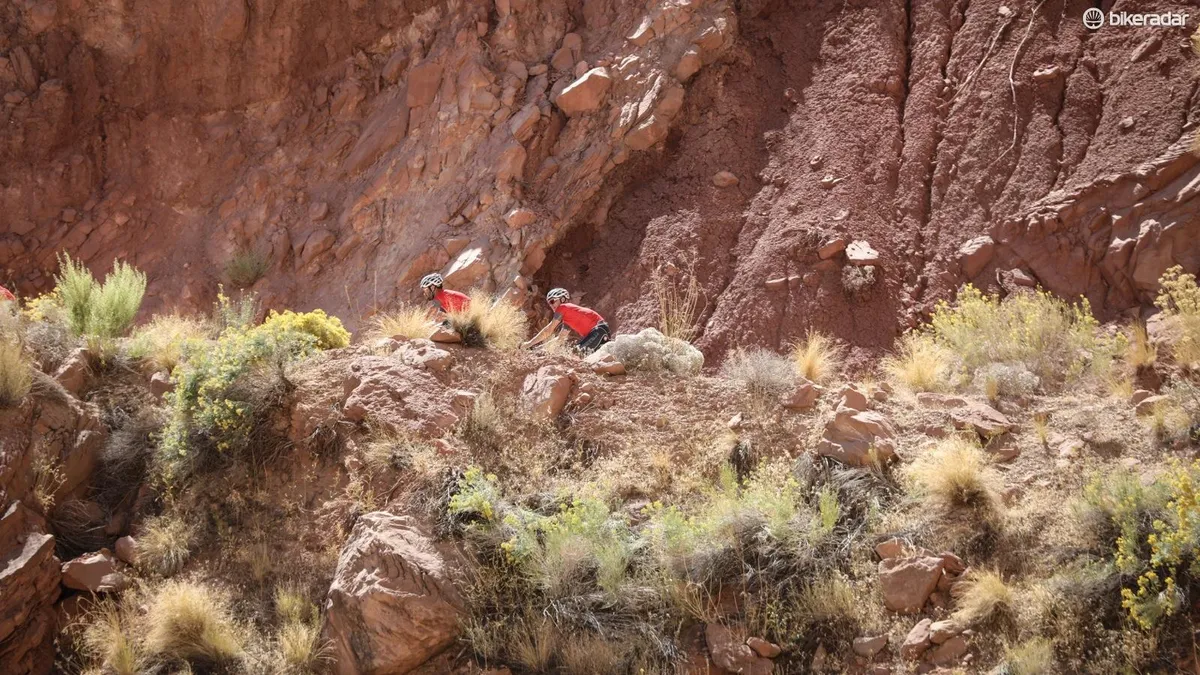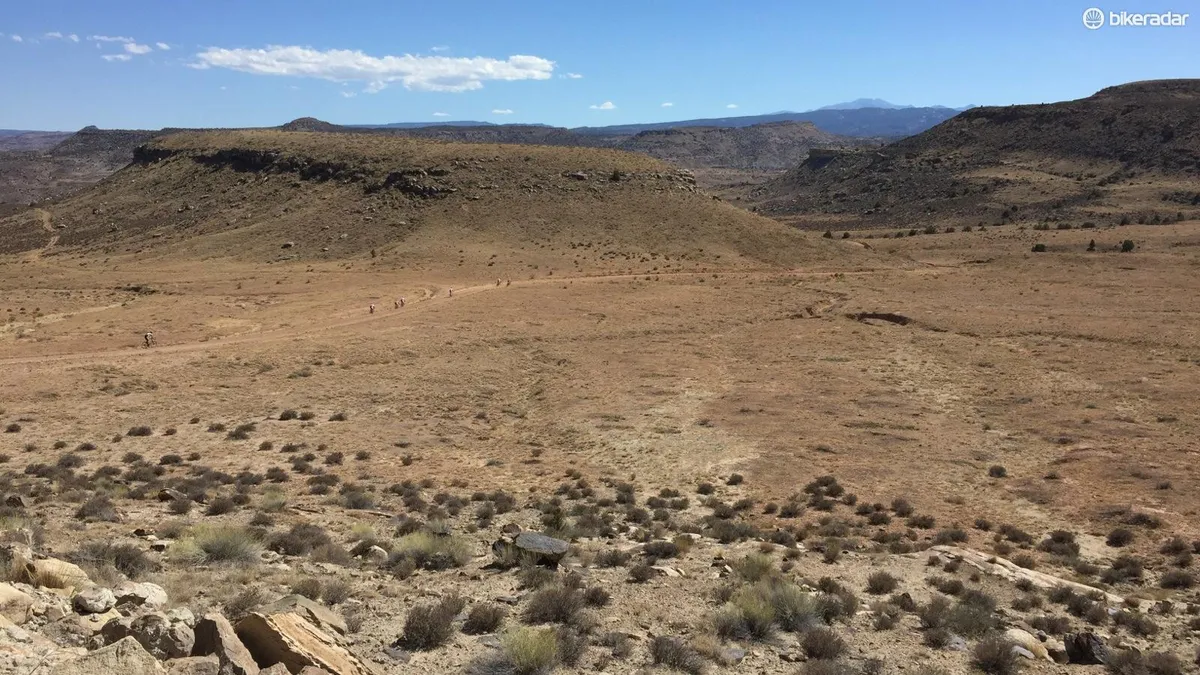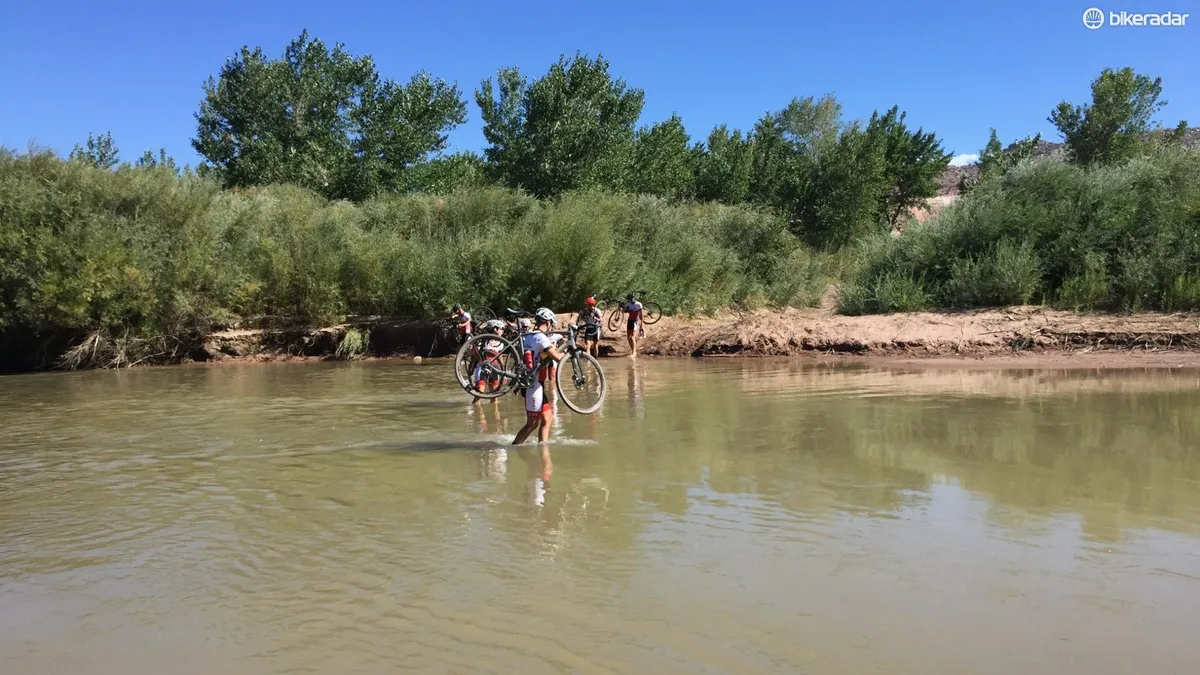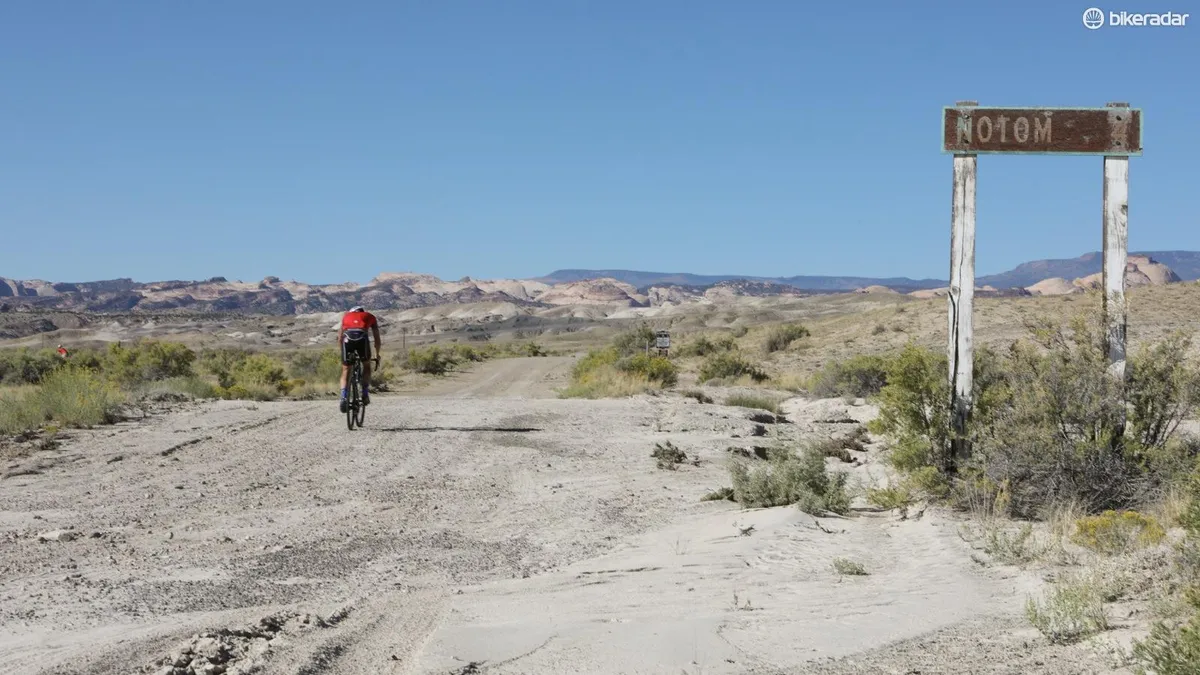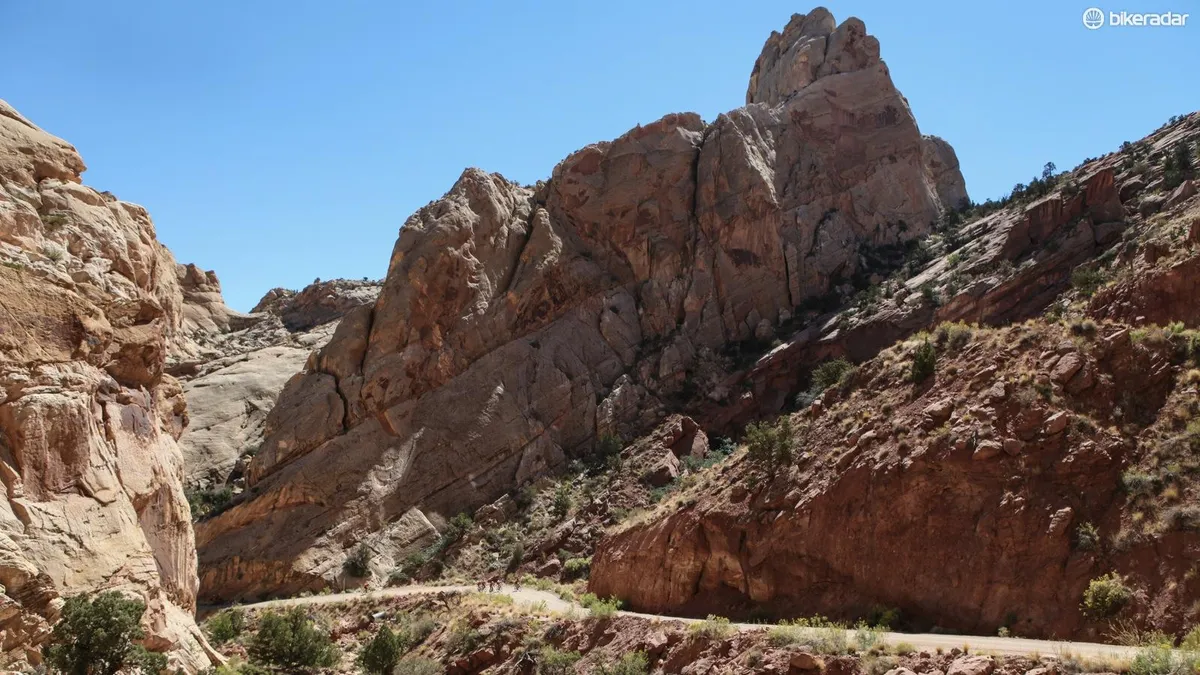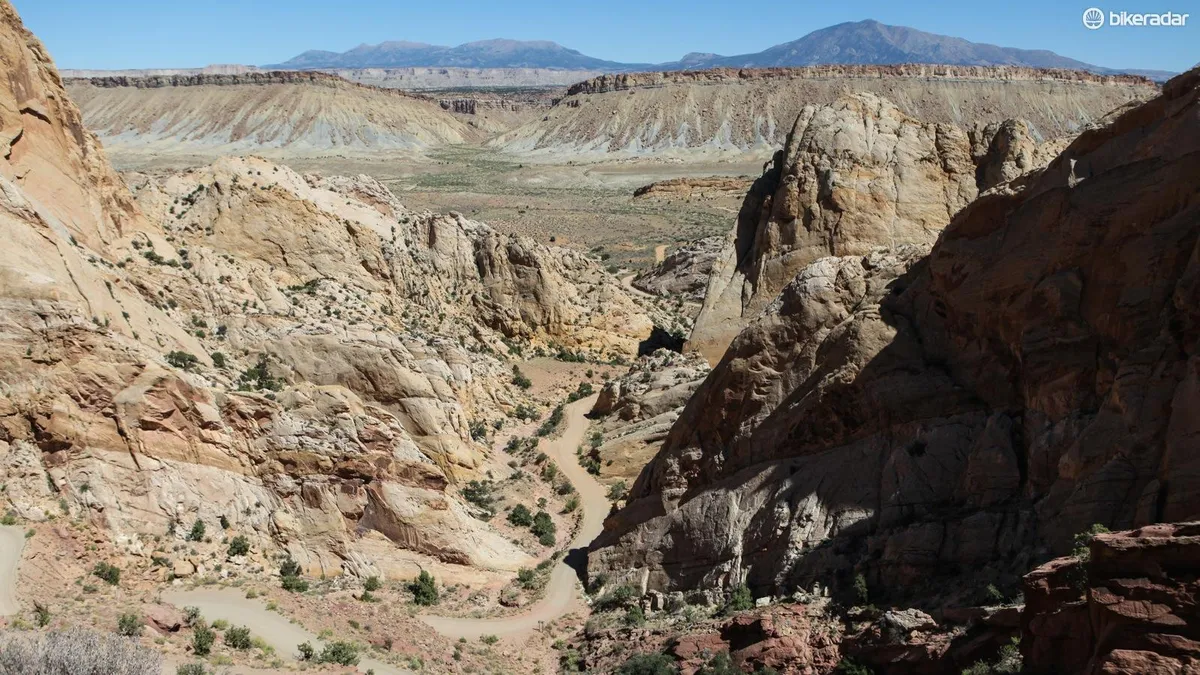The problem with paved roads in beautiful areas is that they’re often packed with cars. But if you’re willing to rethink your definition of road riding, you can have your cake and eat it too, hogging the road and the scenery.
High in the arid southwest of the United States, Utah is teeming with a wealth of desert moonscapes, much of it protected in a patchwork of federal lands. While much of wind- and water-sculpted desert is accessible on pavement, some of the most magnificent beauty lies many miles down dirt roads.
- Two Horses for the Course: Mavic Haute Route Rockies
- Clément Ushuaia wheels review
- Get started with gravel grinding
Clément hosted me and a few journalists on its Beehive Ride in mid-September to showcase its new tubeless wheels, designed for supporting wide tires and riding any surface you’re bold enough to point your drop bar towards.
We rode Eddy Merckx’s new Strasbourg71 Carbon gravel bikes on a mix of dirt, gravel, paved roads and singletrack over the course of about 210 miles with 15,000ft of elevation gain. Once off the asphalt, cars were virtually nonexistent; our bikes and voices were often the only noises to be heard.
Three days in Utah on the new Clément Ushuaia wheels
- The course: 3 days of rough dirt and paved roads in Utah, traversing three national parks for the Clément Beehive Ride
- The horse: Eddy Merckx Strasbourg71 Carbon with Clément Ushuaia wheels, Clément X’Plor MSO 36 tubeless tires and Shimano Ultegra hydraulic disc group
- The objective: All-day sightseeing and fun — plus mechanical dependability, comfort and sure-footedness on rough surfaces
So what’s a gravel bike?
While you might be familiar with gravel races like the Dirty Kanza 200, many of us just enjoying riding on dirt and gravel roads, not necessarily racing on them. The Merckx Strasbourg71 Carbon can handle both, plus plenty of all-duty commuting, with eyelets for racks and fenders.
Merckx included thoughtful touches like Kevlar integrated into the tubes facing the wheels, for protection against rocks that inevitably get kicked up, and there are cage mounts under the down tube. We were supported by vehicles with water and food on our ride, but riding unsupported your range into the desert or any backcountry is determined by your water supply.
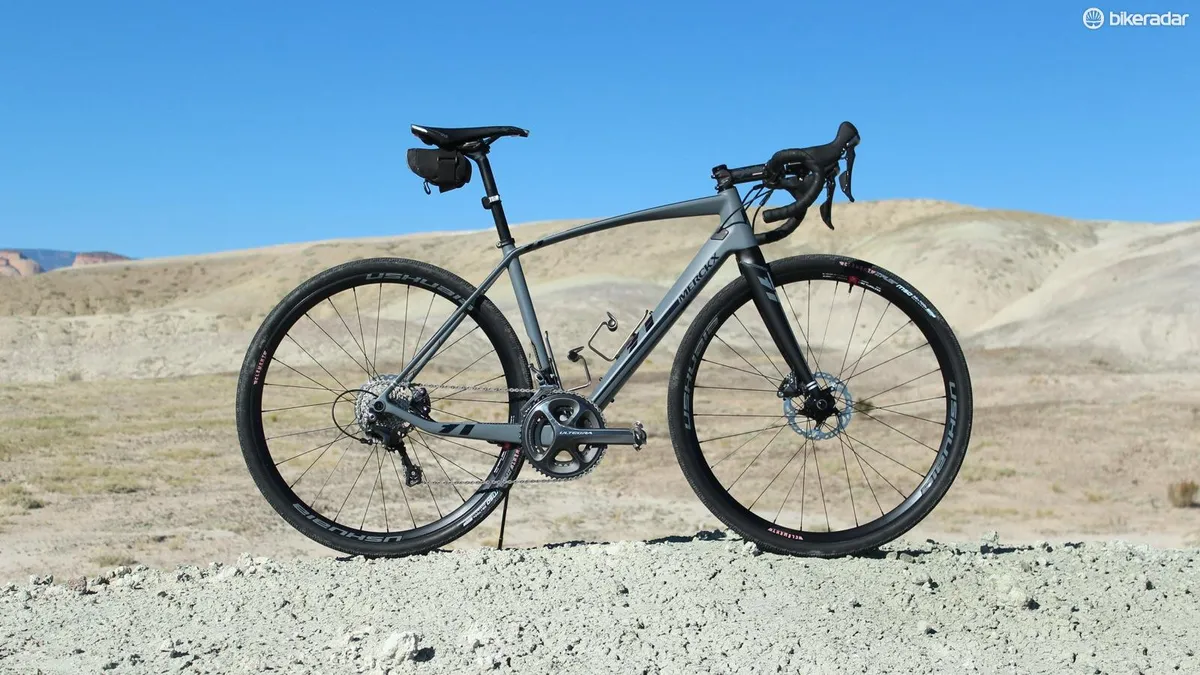
Three key things for a gravel bike are a slack front end (meaning the fork angle isn’t as steep as a road bike), low gearing (a compact crank plus a big cassette) and tire clearance (the bike comes with 36mm tires, with room for 40s). Hydraulics are a given.
While I couldn’t feel some of the compliance features built into the frame — the chainstays kink towards the back for flex, the company claims — I absolutely could feel the give of the long 27.2mm seatpost. It’s a simple but effective result of a sloping top tube.
More gears with a floppy chain or half the gears with a taut chain?
The Strasbourg71 Carbon comes in a pair of double-ring options (Shimano Ultegra Disc and Shimano 105 Disc) and a single-ring build with SRAM Rival Disc.
My Ultegra Disc bike had a couple of modifications — the stock 11-28t cassette was swapped for 11-32t (and I was still looking for a lower gear!) — and Clément’s new Ushuaia wheels instead of the stock DT Swiss R23 Spline.
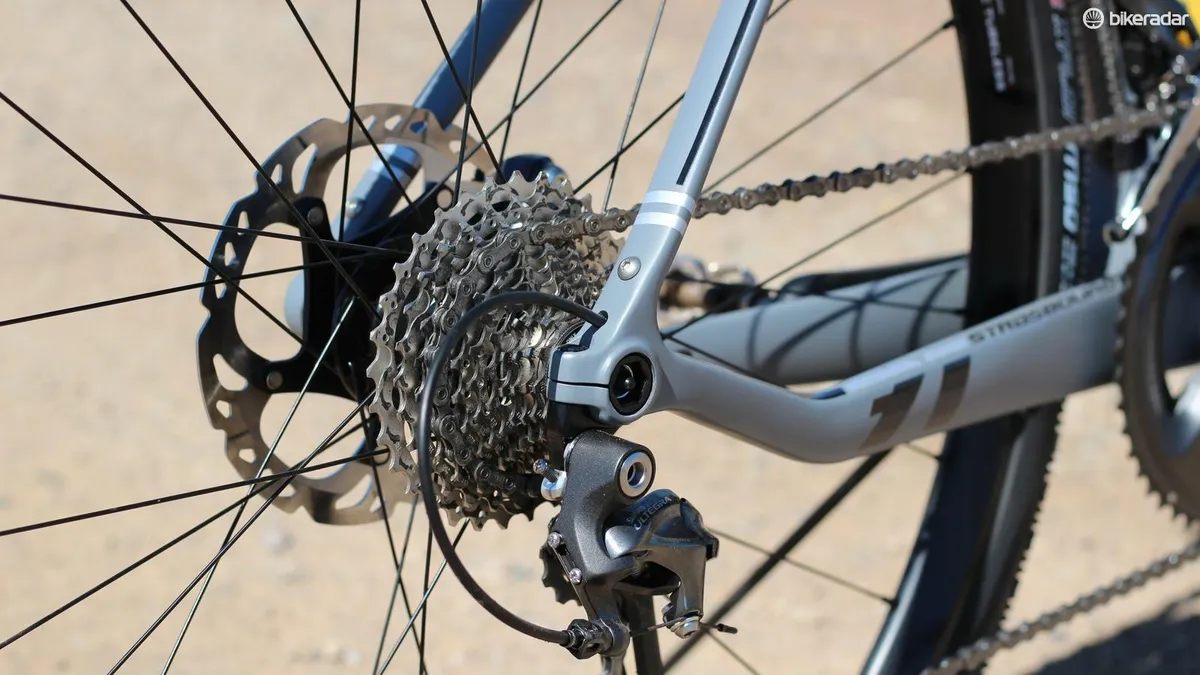
Throughout the long weekend we debated the merits of single-ring versus a double for gravel bikes.
On one hand, my chain was dancing and thwacking all over the place, leaving my right sock ankle coated in grease at the end of each day. Rallying down gravel descents, I dropped my chain a few times. Usually I could pedal it back on, but once I had to stop and unwrap it from the rear derailleur. This was a clear argument for the taut chain that a clutch derailleur on SRAM’s 1x system provides.
On the other hand, not once did I wish that I had 11 fewer gears on my bike. In addition to using the full range — grinding 34-32 up rocky slopes and spinning out the 50-11 down pavement — I appreciated all the steps in between.
I believe that my ideal gravel bike would be a double-ring configuration with a clutch derailleur to keep the chain tight. That doesn’t yet exist in a road drivetrain.
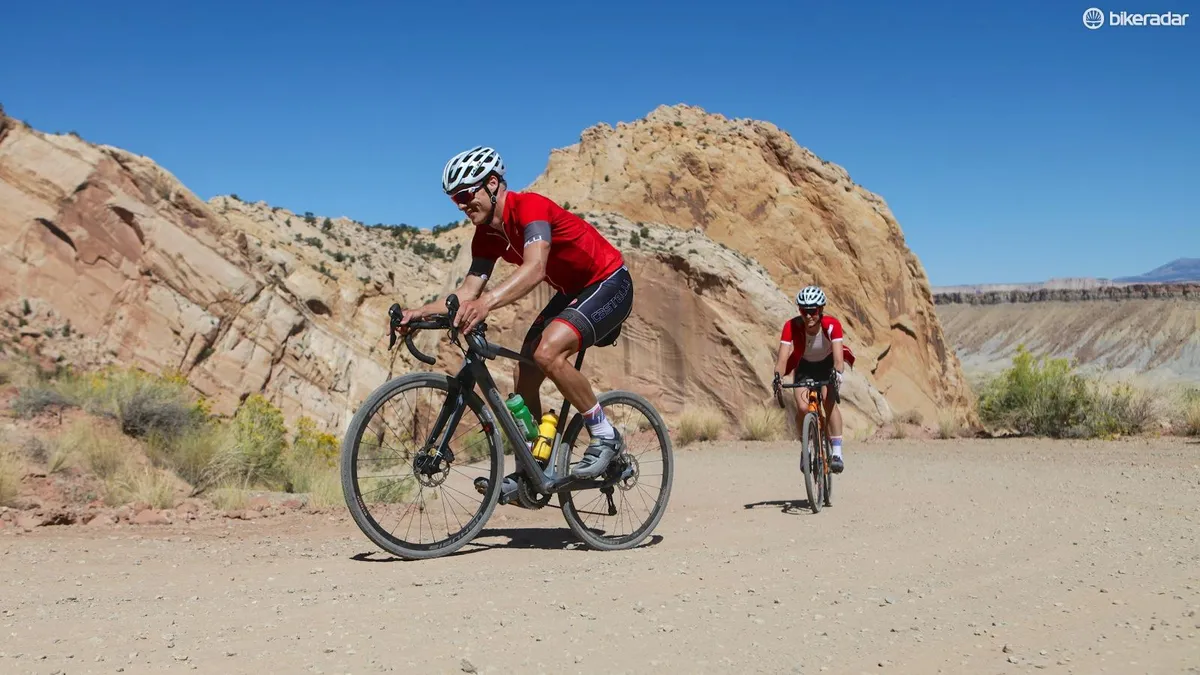
Wide wheels and tires for a wild ride
Designed just for gravel/adventure and cyclocross, Clément’s new Ushuaia wheels sport wide rims (23mm internal) to better support broad tires. For reference, most road wheels these days are about 16mm internally, which works well with 23-28 tires. Mavic has also targeted gravel riding with its alloy Allroad Pro Disc tubeless wheels, which are skinnier (19mm internal width) and pricier (US$1,250 / £820) for roughly the same weight.
The alloy Ushuaia wheels weigh a claimed 1,620g, with a hookless tubeless rim designed to handle everything from 28mm up to a monstrous 50mm. To help prevent burping, the rim bed has a small lip to keep the tire pressed up against the rim.
I rode 36mm Clément X’Plor MSO tires between 30 and 40psi, depending on the terrain.
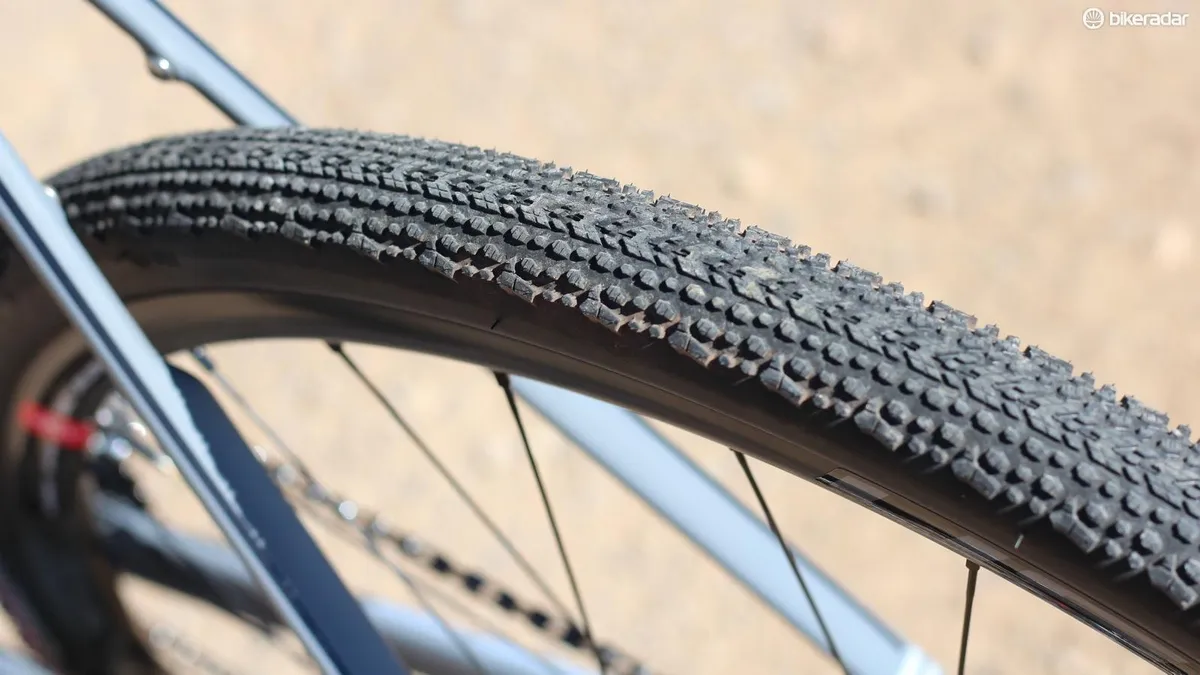
With virtually no traffic to worry about, we let loose on the descents, testing our confidence as much as the tires. In the first two days, only one rider flatted. On the final day, we had a handful more, as the speeds picked up and the rocks got sharper. Sometimes the sealant came through and did its job; sometimes a tube was required to continue.
Clément errs on the side of suppleness over out-and-out protection for the X’Plor MSO tubeless tires. In general, I've found Clément tires to be 20 or more grams lighter than comparable models from other brands. It’s a trade-off for good feel over durability.
As a roadie with less-than-catlike off-road handling, I appreciated the MSO’s soft feel and bite, whether climbing loose gravel or cornering through dirt. I had one puncture and the sealant did its job, but wouldn't hold 40psi. It seemed to settle at more like 25 or 30psi.
As for the wheels, their 26mm external width and 25mm height offer a nice visual balance for gravel tires’ girth as well as structural support. It seems to be a happy medium between a road wheel and a mountain bike hoop.
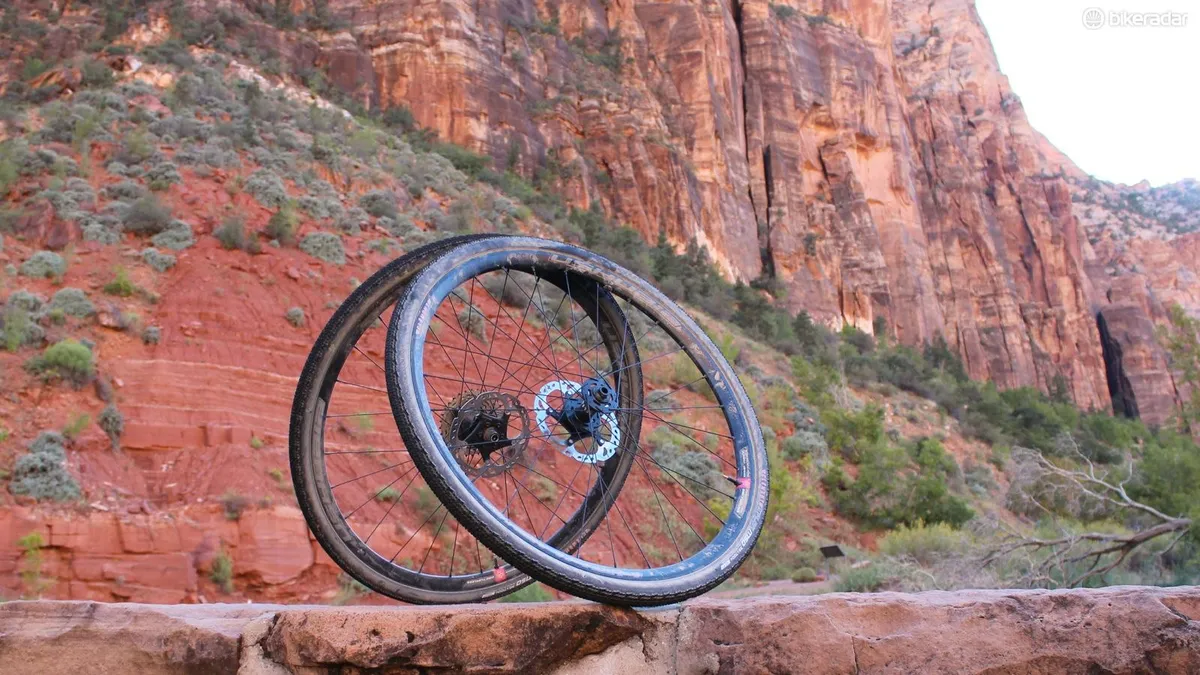
Gravel riding in Utah — a desert rainbow of shades and textures
Clément hired the veteran guiding company Western Spirit to escort us through Utah. Based in Moab, Utah, Western Spirit has specialized in mountain bike trips for two decades. Judging by the luxury treatment we received, I would heartily recommend its services if you’re looking for professional guides in the area.
Our routes were picked by Raleigh-Clément cyclocross pro Jamie Driscoll and Western Spirit, with an emphasis on scenery, low-to-no traffic, good elevation and engaging riding. You can check out the days here, here and here on Strava.
'Adventure' has become cliché enough in cycling now that it has its own category, but there is something valuable about exploring new (to you) environments by bike. As the American West is crisscrossed with dirt roads that are too gnarly for road tires but too tame to warrant a mountain bike, the new-school adventure bikes like the Strasbourg71 are a great medium for getting out there.
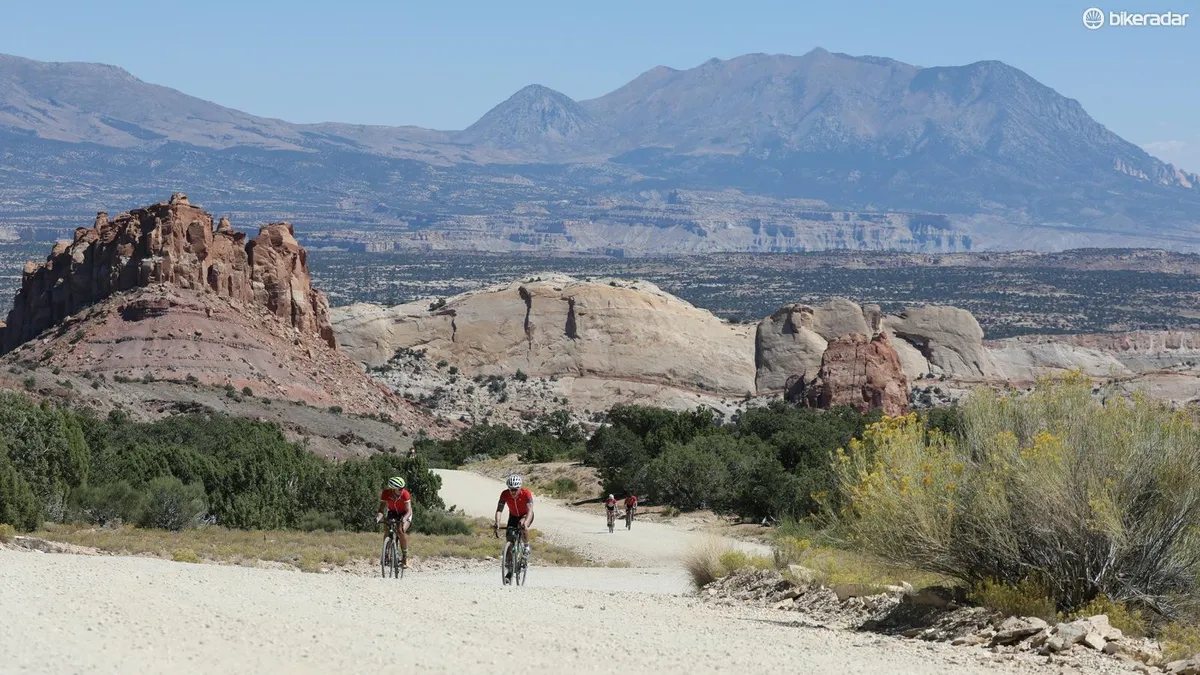
As with any bike you plan to log long miles on, fit and comfort are key. The Strasbourg71 has endurance geometry — shorter top tube, taller head tube — so many of us ran longer stems to replicate our road positions. Saddles are a personal affair, but I got along with the stock Prologo Zero Space. I'd recommend that Eddy Merckx move to an 11-32t cassette from the stock 11-28t, and also spec a handlebar with a wider, flatter top to disperse some of the pressure when riding on the tops.
A few tips for anyone considering a gravel ride in Utah: hire a guide or plan your water situation very, very carefully; wear comfortable, walkable mountain bike shoes; and ride fat tires like the MSO at low pressure. As for all the scenery — good luck trying to squeeze it all into your smartphone's camera.
Horse for the Course is a regular BikeRadar feature. Recently, we've gone bikepacking across the Alps, done a seven-day dirt Haute Route in the Rockies, raced a rental bike at Dolomiti Superbike, and decked out a Plus bike for a bikepacking biking weekend.
